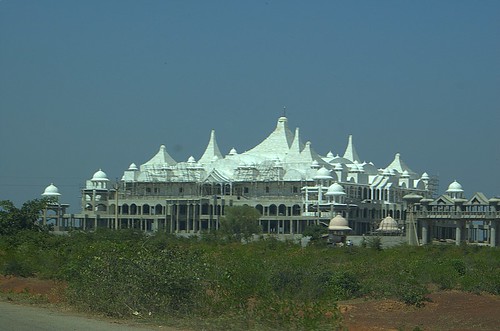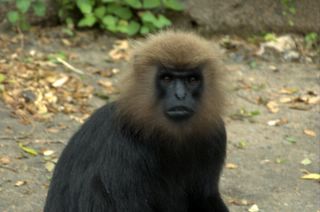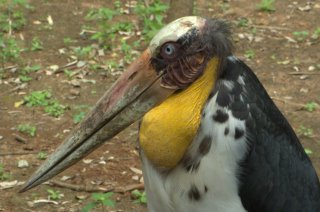 There was an article in Hindu telling great things about Pulicat Bird Sanctuary and about flamingoes who have come there.The journey took around 1 1/2 hrs drive (80 KM from my house). At times my driver drove my Suziki Baleno at around 120 KMPH (A very high speed for the condition of our National Highway). I felt like a Road king going at that speed.
There was an article in Hindu telling great things about Pulicat Bird Sanctuary and about flamingoes who have come there.The journey took around 1 1/2 hrs drive (80 KM from my house). At times my driver drove my Suziki Baleno at around 120 KMPH (A very high speed for the condition of our National Highway). I felt like a Road king going at that speed.If you go further north you will reach Nelapattu Bird Sanctuary. Nellapattu is located on the East Coast about 20-km north of the Pulicat Bird Sanctuary in the Nellore district. It is one of the largest pelican habitats in Southeast Asia with a total coverage area of 404-kms.Tsunami and other abrupt climate changes led to the sand bar's growth at the mouth of Pulicat Lake. These changes have also prevented water from Bay of Bengal entering the lake. This has forced migratory birds to leave. As there is not much
water left into the lake, the migratory birds like shovellers, pintails common teals, curlews, plovers, godwits, shanks, barheaded geese are taking shelter in less known wetlands like nearby Kudiricheruvu. Even smaller birds like waders have also shifted to Kudiricheruvu.The 461 km Pullicat lake extends over Ponneri and Gummidipundi taluks of Tamilnadu and Sulurpet and Tada of Nellore districts of AP.Pulicat Bird Sanctuary is the third most important wetland for the migratory birds on the eastern seaboard of India.

The lake is an important area for a variety of resident and migratory birds like waterfowl, pelicans, herons, egrets, storks, flamingos, ducks, gulls and terns.
More flamingos flock the islands of Venadu and Irukkum, the sanctuary which comes under AP. I had visited Pulicat in Nov 2005 (photo below). The water Level has come down drastically.
As far as birds are considerd, I could see only few egrets and few Asian Openbill and the trip was a dissapointment. Howerve on the way I saw a
 beautiful temple being constructed. The architecture is fascinating and merges with the surroundings.
beautiful temple being constructed. The architecture is fascinating and merges with the surroundings.Next time, I think I will give a visit to Nelapattu village, off the National Highway 5.




